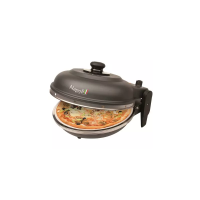This maintenance schedule is based on normal usage. If you ride your bike more than average
or in adverse conditions, you may want to go over your recumbent more often than the manual
suggests. (carry out a quarterly check every month, for example) If any part malfunctions or
seems to be broken, immediately adjust or repair it yourself, or seek the help of a professional.
Do not ride a bicycle that is not functioning properly.
Recommended periodic maintenance
Each time you ride:
· Check your brakes work properly.
· Check that your gears work properly.
· Make a quick visual inspection of the bike to check for other faults.
· Check that quick release levers are securely fastened.
Weekly
· Clean off you bicycle and make a quick visual inspection of major parts
· Check tire pressure and general state of the tires
· Check brakes for correct function and adjust them if necessary.
· Adjust malfunctioning gears and lubricate the chain if dry.
Quarterly checklist.
Brakes
· Check that the brake pads meet the disk or rim accurately and do not scuff the tires.
· Check your brake blocks for wear.
· Secure break mounting bolts.
Cables
· Check all cables for damage, kinks or wear. Replace as needed.
· Take the cables out of their housings and clean them, also checking for kinks in the wire
(replace if there are major kinks, as a cable may snap there if not replaced!
· Readjust gears and brakes to compensate for cable stretch.
Wheels
· Check hubs for excessive play or noise. Disassemble, re-lube and tighten the hub if you
encounter any of these.
· Check that your rims are true, and inspect them for ange denting and wear.
· Make sure that all the spokes are tight and equally loaded, check for kinks in the spokes.
Replace damaged spokes.
Warning! Failure to follow these guidelines could allow
faults or badly adjusted components to go unnoticed, until a
resultant crash!
28 29
Tires and inner tubes
· Check tire pressure: Low tires will require more effort to keep rolling, and may be dangerous
in emergency maneuvers.
· Inspect tire tread and sidewalls for wear, splits and general integrity. Replace the tire
immediately if you can see the tire carcass or have any doubts on the state of the tire.
· Replace inner tubes with more than about 5 patches – these will generally leak slowly
anyway.
Derailleurs
· Check the sideways travel of the derailleurs, checking that the limiting screws keep the
derailleur away form the spokes and frame.
· Clean the rear derailleurs cogs and derailleur arm. Check cog bolts for proper tension.
· If the adjustment barrel on your derailleur and/ or shifters is signicantly screwed out,
its time to undo the cable bolt on the derailleur, screw the adjustment barrels in and
retighten the cable.
Drivetrain
· Inspect chain to ensure it is in a good state, with no seized links.
· Lubricate chain, clean beforehand if necessary. Don’t forget to clean the cogs if you clean
the chain! If you want to remove the chain, remember that all Optima bicycles come with
superlinks in the chains that can be taken apart with the hand.
· Inspect chainwheels and rear cassette, for wear and broken teeth. Worn teeth begin to
resemble shark ns.
· Check that the chainrings are true, and are properly tightened to the crank.
· Check that the rear cog cassette is securely fastened to the rear wheel. Tightening the
cassette requires a special tool.
· Check that the chain protection tubes are securely fastened to their ttings. A loose tube
may cause to chain to jump off the cogs unexpectedly or damage the derailleurs.
· Inspect and lube the chain rollers. Inspect the chain track; these are consumable products
which wear down, and will need replacement.
Headset
· Check for excess play or a ‘sandy’ feeling. Tighten or re-lubricate as necessary.
· Re-lubricate headset if the grease is dry or dirty.
· Check the lubrication of the Riders wheel xing / steering slave blocks.
Check the alignment of the handlebars

